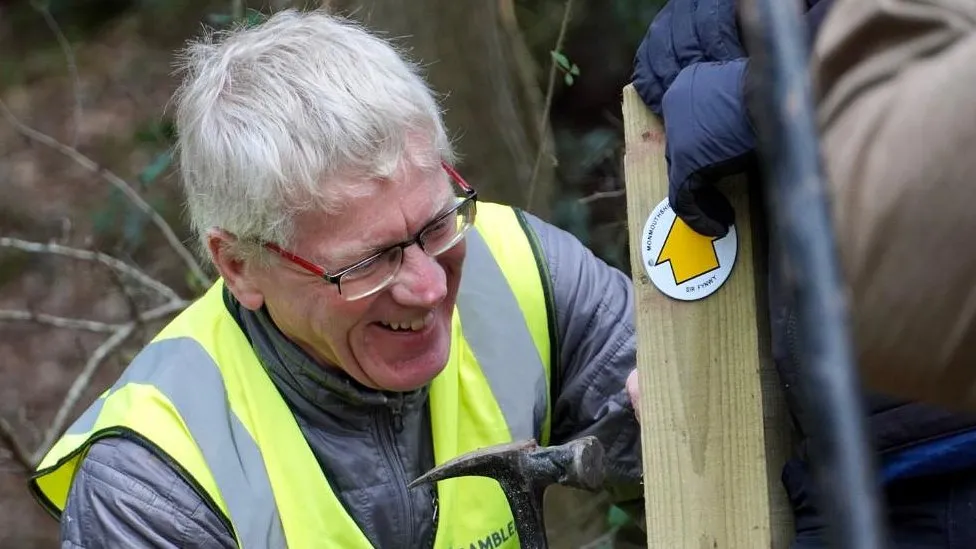However, they are fighting back, with one rambler even training as a lawyer to force councils to keep the path free.
A BBC investigation discovered that councils responsible for walkways had 4,000 more access difficulties on public rights of way in 2023 than in 2022.
Campaigners claimed this demonstrated “growing abuse and neglect” of the path network.
Local officials stated that “funding constraints” hindered their ability to act.
Lucy Wilson, a walker in Cornwall, where there are 2,796 miles (4,500 kilometers) of public rights of way, is determined to keep countryside trails usable.
Lucy Wilson
Image Source: BBC/Claire Marshall.
Campaigner Lucy Wilson qualified as a lawyer to challenge her local council’s access policies.
Mrs Wilson stands on a trail tucked into the folds of the Tamar Valley, pointing up at a precipitous muddy bank topped with a crop of brambles.
“That’s where the path should go,” she says. “You cannot see anything. It’s simply gone.”
Her finger traced the registered right of way on a map on her smartphone. We scramble up the bank but are unable to force our way beyond the thorns.
She explains that individuals have been trying for five years to persuade Cornwall Council to make this walk accessible.
“The council lacks the resources, but that is not an excuse; they have a statutory obligation to do this. “It’s not a choice,” she says.
All landowners have a duty to keep paths free, but the final responsibility falls on the local roads authority, which is usually the local county, unitary council, or national park.
‘Shocking negligence.’
Mrs Wilson, a campaigner for the Open Spaces Society, believes that half of the Cornish pathway network has unresolved difficulties.




